
Have you ever had an idea spark another notion? A waterwheel may have been one boy’s inspiration for what is ubiquitous at today’s carnivals and amusement parks: the Ferris wheel! George studied engineering and created the world’s first 6-story tall observation wheel which showcased at the 1893 Chicago World’s Fair to the amazement of all. Realistic illustrations and lively text bring the man and his times to life.
The Fantastic Ferris Wheel: The Story of Inventor George Ferris

Richly hued illustrations and an engaging text (that reads aloud well) present a brief look at the life of a girl who was well ahead of the 19th century in which she lived. Ada’s mother left her husband, the philandering poet Lord Byron, moving to London. There she encouraged Ada’s passion for all things math, including developing algorithms for Charles Babbage’s Analytical Engine, an early computer.
Ada Byron Lovelace and the Thinking Machine

Brainspace is a traditional magazine and a digital magazine combined into one publication. On the traditional side, each issue is packed with stories and lots of short items, contests, fun facts and compelling visuals. Subjects range a diversity of subjects offering a broad range of informative and inquisitive stories that go well beyond textbook thinking. On the digital side, Brainspace makes a big deal of its digital-image recognition technology. Using the free LAYAR app, scan any image in the magazine showing the AR icon and watch as that image scans and becomes a video and/or audio augmentation.
Brainspace

Kids who can’t help wondering whether video games really kill their brain cells, or what a gentleman ladybug is called, will find the answers here, in articles written by award-winning authors and accompanied by high-quality illustration and photography. MUSE makes a perfect gift for readers who are outgrowing ASK magazine or are interested in science, history, and the arts.
Muse

Full of learning and fun for today’s preschoolers and their parents! Bursting with lively photographs, engaging stories, and interactive picture games, each issue supplies you with fresh and imaginative teaching tools created by noted educators at National Geographic.
National Geographic Little Kids

Designed to spark your child’s interest in arts and science, Ask explores intriguing topics such as why animals sleep, why people love music, and how the solar system was formed. Kids love their subscriptions not just because the magazine is informative, but because it’s fun. Perfect for readers who are ready for more challenging reading, as well as any curious 6 to 9 year-old.
Ask

Tombs, mummies, dinosaurs — budding archaeologists and history buffs ages 9 to 14 are off to new adventures at dig sites around the world. DIG explores the history of the ancient world and its modern branches. Readers look over the shoulders of professional archaeologists working in the field to unearth important finds, and into working laboratories and museums to learn about cutting-edge conservation techniques. Interviews, profiles, articles, and biographies, along with detailed maps and charts, convey the exciting intersection of history and archaeology.
Dig Into History

What and how many creatures make their home in one almendro tree? Count the animals and insects that reside in one single Latin American rainforest tree in lush illustrations and straightforward text.
Tree of Wonder: The Many Marvelous Lives of a Rainforest Tree

Sharks have not five but six senses —; all used to help them survive and even thrive. “Electroreception” is the sixth sense that allows sharks to detect electric fields emitted by other animals. This introduction to sharks is effectively illustrated with collage and will likely inform as well as dispel shark myths.
Sharks Have Six Senses

Stunning photographs accompanied by lyrical text describe rain and its effects in a rainforest and on people. This handsome book can be read as poetry, examined for its photography, and/or used as an introduction to the water cycle and weather.
Raindrops Roll
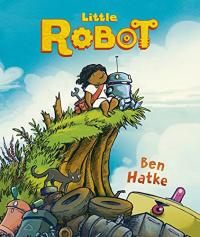
A little girl activates a robot and finds a friend but now must save her friend from fierce, nasty robots. This nearly wordless adventure is presented in comic book form and is sure to delight young readers.
Little Robot
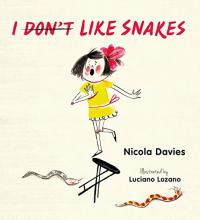
A girl lives in a family of snake-lovers who dispel the myths that make her dislike the often misunderstood reptile. Factual information combines with lively story illustrated in distinctly different styles to highlight the differences between them.
I Don’t Like Snakes

Poor Mary Mallon did not realize that she carried a disease that might (and sometimes did) kill the families for whom she cooked. How the early 20th century medical mystery was solved is presented in a well-researched, spellbinding narrative. In addition, Gail Jarrow’s Fatal Fever: Typhoid Mary (Calkins Creek) focuses on those responsible for tracing Mary.
Terrible Typhoid Mary: A True Story of the Deadliest Cook in America

In order “To know a spider you must first look into its eyes” – literally! Readers can do so in this fascinating look at a variety of spiders through a series of close up, full color photographs and lucid text to describe the characteristics of spiders. Even those with arachnophobia will appreciate the unusual but thorough approach to these creatures.
Spidermania: Friends on the Web

Join National Geographic Explorer, Daniel Raven-Ellison, as he takes a comprehensive look at wolves and what individuals can do to help their survival in the wild. Handsome full color photographs are interspersed with text for an appealing format in this informative and empowering presentation.
Mission: Wolf Rescue

This episode details the time when Benjamin Franklin was in France and how he explained the mysterious cures proffered by Dr. Franz Mesmer. The light touch in a format reminiscent of a graphic novel makes the snippet of history accessible and appealing. Source notes complete the book.
Mesmerized: How Ben Franklin Solved a Mystery that Baffled All of France

Boy genius, Frank Einstein, and friends explore energy and other science topics as they relate to their everyday interests. The latest in the series is filled will wordplay, science ideas and additional silliness to engage even the most reluctant readers. The heavily illustrated book will not disappoint Frank Einstein fans.
Frank Einstein and the Brain Turbo
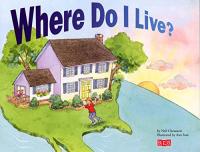
You live in your home…but where is your home? It’s in your neighborhood…but where is your neighborhood? It’s in your town, which is in your state, which is in North America, which is on the planet Earth, which is in the solar system, which is in a galaxy of stars called the Milky Way.
Where Do I Live?

Fourteen critters are presented here through well-placed photographs and fascinating factoids. From small (“the female tarantula lays 500 to 1000 eggs in a silken sac…”) to tall (“a giraffe’s tongue is black”), to up in the air (the hummingbird) or down in the water (a seahorse), this book is fun and informative.
Weird and Wild Animal Facts

The octopus is not only intelligent, it can be remarkably adaptable able to change color, shape and even skin texture. This fascinating overview is illustrated with attractive watercolors and includes additional detail in back matter. For older readers (ages 9 to 12), The Octopus Scientists (opens in a new window) by Sy Montgomery with photographs by Keith Ellenbogen follows octopus scientist, Jennifer Mathers, and her international team as they learn about and try to better understand this clever creature.
Octopuses! Strange and Wonderful

From whales to wasps, glimpses into animal behavior makes for intriguing reading. A pig eating python concludes the brief, engaging book illustrated with cut and torn paper collage. Back matter includes a bit more detail about the creatures described.
How to Swallow a Pig: Step-by-Step Advice from the Animal Kingdom

Follow three scientists as they study the osprey, a fascinating raptor, in and around Missoula, Montana. How these large birds are tracked and studied is revealed in a highly accessible well-researched text and color photos. Further information appears in sidebars and back matter.
The Call of the Osprey
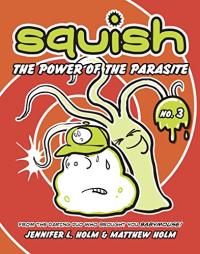
School’s out! Everyone’s favorite amoeba is headed to summer camp! Squish’s summer is turning out to be terrifying! For one thing, Squish can’t swim. And to make matters worse, his new camp friend is a Hydra (scientific fact: A hydra’s tentacles can paralyze you!). Will Squish sink or will he swim this summer?
Squish: The Power of the Parasite
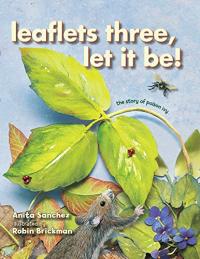
As it changes its appearance throughout the seasons, this plant also provides food for different birds and animals. But many people see poison ivy as a nuisance only for the itchy, sometimes dangerous reaction to it when they come in close contact with it. This attractive and informative introduction to poison ivy is handsomely illustrated with a brief but engaging text.
